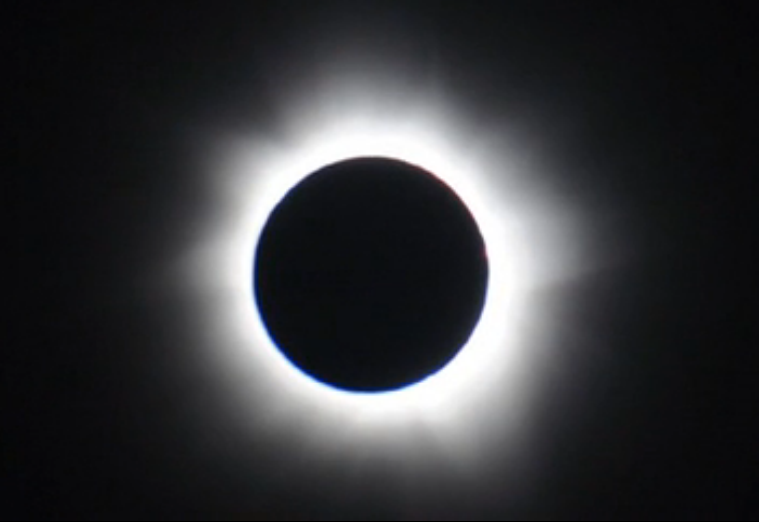
This article was originally published in the October 15, 1984 issue of Friends Journal. We shared it again for the U.S. total solar eclipse on August 21, 2017. View and download the whole issue in the archives, which are accessible online by members only. Join us today for as little as $28.
A late spring solar eclipse—”the last one until the mid-1990s”—brought a measure of excitement to students and teachers enduring the remaining days of a rapidly waning school year. Students gathered at my window, unable to see the sun but aware of the softly filtered light from the cloudless sky. A few with passes from their science teachers asked to leave class to observe the eclipse outdoors. Cautioned not to look directly at the sun, they flashed their “how-dumb-does-he-think-we-are” smiles and showed me their opaque x-ray film and their cards with pinholes and white viewing surfaces. A few students without passes wanted to go too, so I provided cards, straight pins, instructions, and renewed warnings.
“Looking at the sun couldn’t really blind us,” a few scoffed. I assured them it could. Warned but still skeptical, they departed.
In a few minutes they were back. “Did you see it?” I asked.
“Yeah, the card and the pinhole really worked!” one replied, his voice expressing amazement that an English teacher could know about such things.
“What did you think?” I asked.
“I dunno. It’s kinda weird . . .”
We take light—external light—for granted, unaware until it dims or disappears of how much we depend on it. History and myth both record the panic that primitive peoples felt and the extreme means they sometimes took to assuage the gods who were robbing them of light, consuming the sun. Even now, informed by the media of the exact time and extent of an eclipse, we find the experience “kinda weird.”
How do we react to the presence or the seeming absence of the Light Within?
Often it is the presence of the Inner Light that we find upsetting or disquieting. Its absence, or at least our lack of awareness of its presence, seems the natural order. When, in the midst of busy schedules, we sense its presence, we seek ways of denying it, of avoiding it, of subverting it. Often we succeed. We seek it in periods of meditation; but when it appears, we shift uneasily in our places. Sometimes like our forebears, we quake before its intensity and its leadings. Blinded by the light, we stumble.
The absence of the light seems more natural. Our cares and concerns crowd in and obscure the dim glow. Anxiously we hold them to the light, but they only block its passage.
Perhaps, as with the external light, we need techniques and precautions to avoid the extremes of too much or too little light. Becoming preoccupied with light—looking at it rather than seeing by it—may limit vision. We need to relax, accepting light instead of darkness as the natural order. Rather than following it blindly, we ought to follow the way it reveals.
When the light is dim or obscured, looking too hard can limit vision also. A technique, borrowed, ironically, from military surveillance training, may be helpful. Instead of looking directly at an object, the observer is instructed to look past it. Peripheral vision is more sensitive to light and to movement. Instead of looking directly at a concern, we may do better by looking past it, waiting quietly, allowing the light to surround it, modeling its features and showing a way.
The sun is back to full brightness now, and we walk in its light. It can burn us or leave us cold, but mostly it warms us and shows us the way. When it leaves for a time, we trust that it will return. Eclipses are, after all, only temporary.




Comments on Friendsjournal.org may be used in the Forum of the print magazine and may be edited for length and clarity.